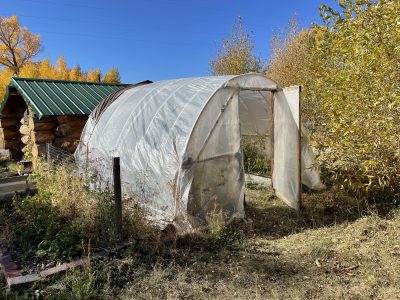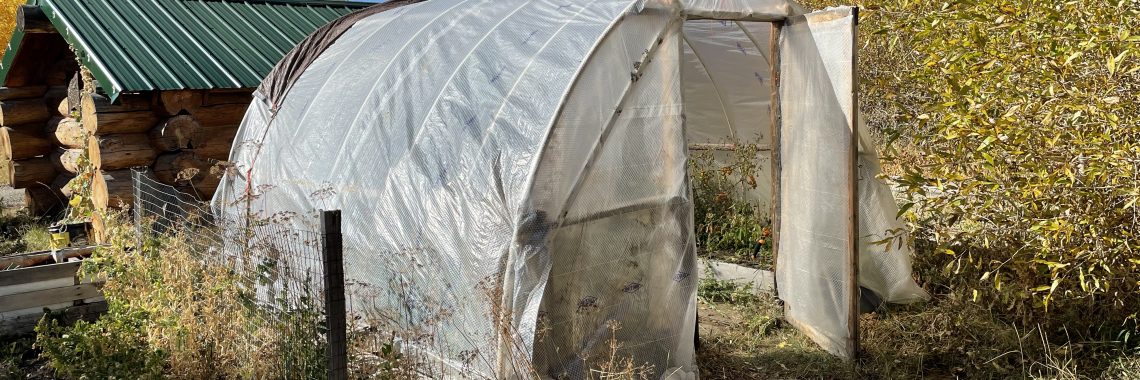Many vegetable growers are ready for a break by the time fall rolls around. Others are still on a roll!
Growing vegetables into fall has advantages – it’s cooler, so less water is required, things aren’t so hectic, insect damage is less likely, and some vegetables get a bit sweeter with cooler temperatures.
Some growers go even further, extending the harvest of some crops into winter. Sometimes it works, other times, not so much. Protection like hoop houses and row covers can increase the likelihood of a successful harvest.
Choosing fall crops
Some of the hardiest vegetables in fall include radishes, leeks, rutabagas, kohlrabi, cabbages, spinach, turnips, Brussels sprouts, collards, kale, beets, and green onions. Some that are less hardy but can withstand light frosts include broccoli, carrots, peas, leaf lettuce, cilantro, swiss chard, and cauliflower.
When grown outdoors, row covers draped over hoops can help some of these crops resist damage from light frosts. A layer of clear plastic can be added to continue harvesting some crops into October and November, even at some higher elevation locations.
Certain crops can even last into the beginning of winter if they are sheltered in a high tunnel or similar structure or are covered with enough insulating mulch. Carrots can be stored in the ground and dug for a considerable time with mulching or other forms of cover; however, if the soil freezes solid, harvest time for carrots is over. They will lose quality when they thaw.
First frost, last frost information
If interested in having fall crops to harvest, take a look at your area’s average first fall frost dates, add a couple weeks depending on their hardiness, and then calculate backward using the days to harvest to determine when to plant. Freeze dates for your area can be found at bit.ly/wyo-freeze-dates.
A few cool season crops have difficulty germinating during the heat of summer. Increase seed germination rates by shading the area where they will be planted and watering to cool the soil before planting. Another tactic, depending on the crop, is to start the plants indoors and then transplant them into a garden.
Fall is even the time to plant a few crops! Garlic and certain shallots are often planted after the first frost but a couple of weeks before the first heavy frost. The cooler temperatures keep the bulbs from sprouting and having their top growth killed. Once planted, they grow roots and wait out the winter under a thick layer of mulch. They start growing again in spring when temperatures increase, and they are uncovered.
Double protection for winter growing
There are high tunnel owners use a double-protection method to keep harvesting certain cold tolerant crops into winter. This involves using the high tunnel as one layer of protection and then using fabric row covers placed over hoops within the tunnels as another layer. The sunlight getting through the coverings is a key component of this method. The sun heats the soil within the high tunnel. This heat can then be released at night to help protect crops.
It seems like the size of a high tunnel influences success. It is logical to assume the more soil and air that is heated during the day, the more protection provided at night. The variable nature of climate in our state, especially if influenced by altitude, wind, humidity, and fast, large temperature changes, can affect success of even protected growing. Each grower will have to experiment to see if, and for how long into the fall/winter, this method might work for them.
Hours of sunlight dictate growth
Taking notes each year on planting dates and other information can help hone-in on the best method for your location and situation. Time the plantings if you are interested in trying this method.
Time the plantings so most of the growth has occurred before days drop under 10 hours of sunlight in the fall. This varies slightly across the state since this is determined by latitude. Laramie hits a 10-hour day around November 12 and in Ranchester around November 5.
As we pass the winter solstice and the day length starts to increase, the day we have the first 10-hour day is around January 29 in Laramie and February 4 in Ranchester. The period between the last 10-hour day of one season and first 10-hour day of the next season is sometimes referred to as the “Persephone Period,” a title created from Greek mythology. This is the time when many growers have observed plant growth becomes extremely slow in protected situations, where the heat and light is mainly coming from the sun.
During the Persephone period some growers can continue to harvest their previously grown crops (after they have thawed out for the day), but further growth is not expected.
Some of the most cold hardy crops for winter growing are spinach, kale, mâche, collards, baby brassica greens (pak choi, tatsoi, mizuna, and mustard), and winter scallions. Those more interested in a challenge can try lettuces, carrots, cilantro, radishes, and leeks. If possible, choose varieties adapted to winter growing and for certain vegetables, varieties that are slow to bolt (put up a flower stalk after experiencing certain amounts of cold).
Bolting generally happens when day lengths get longer. Bolting reduces the quality of the crop. Keep in mind many of the cool crop vegetables are more cold hardy when young.
Other growers with high tunnels take a rest during the darkest days of winter and start sowing some of the cold hardy spring crops after the Persephone Period. This gives them a jump on the season, resulting in harvests long before these crops would be ready outdoors (or even planted in some areas!).
A good resource for more information on this method is The Winter Harvest Handbook by Eliot Coleman, a well-known grower from coastal Maine and proponent of this method.
See this article from Michigan State University bit.ly/msu-winter-overwinter for a briefer introduction to winter harvested and overwintered crops in high tunnels.

NRCS offers high tunnel program opportunities
If you are an ag producer considering using high tunnels to produce food for sale, contact your local USDA – NRCS district conservationist to learn more about their high tunnel system for crops and other cost-share opportunities. Wyoming offices contact information is at bit.ly/wyo-nrcs-offices.
There’s nothing Jennifer Thompson likes more than a good, cold-hardy crop seed catalog (in whatever form!). She is the small-acreage specialist for the University of Wyoming Extension.





